Celebrated on the first day of the Chaitra month of the Hindu calendar (March-April as per the Gregorian Calendar), Gudi Padwa marks the New Year's Day for Maharashtrians and Hindu Konkanis in India. The Brahma Purana declares Gudi Padwa to be the time on which Lord Brahma created the world after the great deluge. One of the 3 and a half days in the Indian Lunar calendar called "Sade-Teen Muhurt", whose every moment is considered auspicious in general to start a new activity..
Nava varshachya hardik shubhechya to you all!
Gudi Padwa -- New Year Day
Importance - The Beginning Of The Hindu Calendar.
The New Year day of the Maharashtrians, Gudi Padwa heralds the advent of a prosperous new year and is considered as one of the most auspicious days by Hindus. The Hindu year begins on the first day, "shuddha pratipada", of the month of Chaitra (March-April). It is one of the 'Muhurat' amongst the three and a half Muhurats that occur in Hindu calendar year. The day is considered auspicious for building or entering a new house, putting a child to school, or starting a business. With this day begins the new season, the spring.
It is believed that on 'Gudi Padva' :
-The Universe was created by Brahma.
-Satyuga (The Age of Truth and Justice) began.
-King Vali was killed by Rama.Shri Rama returned to Ayodhya victorious.
-This is one of the 3 and a half days in the Hindu Lunar calendar, whose every moment is considered auspicious.
It is a day of great festivity and rejoicing. People get up early and clean their houses, decorating them with intricate rangoli designs. New clothes are worn, and sweets made for the occasion include shrikhand, basundi, etc. Many homes also decorate the pots with coconuts, flowers and mango leaves, symbolizing nature's bounty to all.
On this day a pole named Gudi is erected in front of the house. Padwa is another name for "Pratipada", the first day of the lunar month. A new cloth is tied on the Gudi, a metal or silver vessel is put on to it and a garland of sweets is hung on it. People welcome the New Year with Gudi worship and distribute Prasad comprising of tender Neem leaves, tamarind, Ajwain, gram-pulse and jaggery. The Neem paste is believed to purify the blood and build up immunity in the body against diseases.
The Festivities
On the festive day, courtyards in village houses will be swept clean and plastered with fresh cow dung. Even in the city, people take the time out to do some spring-cleaning. Women and children work on intricate rangoli designs on their doorsteps, the vibrant colors mirroring the burst of color associated with spring. Everyone dresses up in new clothes and it is a time for family gatherings. Specialties like soonth panak and chana usal are eaten on this day. Traditionally, families are supposed to begin the festivities by eating the bittersweet leaves of the neem tree. Sometimes, a paste of neem leaves is prepared and mixed with ajwain, gul, tamarind and jaggery. All the members of the family consume this paste, which is believed to purify the blood and strengthen the body&-s immune system against diseases.The inner significance of this is to indicate that life is a mixture of good and bad, joy and sorrow, success and disappointment, and all of them have to be treated alike. All experiences have to be treated with equanimity. Every one should resolve to face calmly whatever happens in this year, accepting it with good grace.We all should rise above sorrow and happiness, success and failure. Auspicious days like Ugadi should be used for making resolutions to change our way of life and to purify our behavior by giving up all bad qualities.
People also listen to Panchanga (Panchanga Shravana-listening to the yearly calendar) on Ugadi. Experts will open the new Panchanga on the day and explain the forecast of rain, crop, storms, crop prices and other relevant things. Prediction of the whole year make people prepared to face any situation.
In Maharastra, shrikhand -a fragrant yogurt dessert, with poori-a fried puffy bread is prepared.
Gudi Padwa Trivia
1. A number of stories are associated with the festival, prominent among them being the theory of creation and also the day when Lord Ram returned to Ayodhya after defeating King Ravana in Lanka.
The year begins on the first day of Chaitra of the Hindu calendar named as Shalivahan. It is named so after King Shalivahan from Paithan in Maharashtra.
2. Gudi Padwa is symbolic of love and devotion between the wife and husband. On this day newly married daughters with their husbands are invited for special meals and resents.
3. Unlike other festivals, Gudi Padwa, is a very family-oriented affair, but one can also take part in the yatra organised the previous day, where families bring diyas and float them on the lake.The whole lake is lit up with floating diyas which looks really beautiful.
Gudi Padwa Legends
Gudi Padwa marks the first day of Marathi Calendar and is celebrated primarily in the southern states like Maharashtra, Andhra Pradesh and Karnataka. A joyous festival, Gudi Padwa is also a sacred occassion and its origins can be traced back to various legends often embedded in Hindu religious scriptures.
The Brahma Purana holds that it was on a Gudi Padwa day that Lord Brahma created the world again after a devastating deluge and time began to tick from this day forth. The day marks the start of Satyug (era of truth and justice). Gudi Padwa is said to be one of the 3 and a half days in the Indian Lunar calendar called "Sade-Teen Muhurt". Every moment of this period is considered auspicious to start new ventures. The word ‘padwa’ is derived from Pratipada, the first day of a lunar month or the first day after no-moon day (Amavasya). Gudi Padwa is specially dedicated to the worship of Lord Brahma. Hence, special flags known as "Gudi"s are erected in honour of Lord Brahma. These are also called "Brahmadhvaj" or ‘the flag of Brahma’. Some also refer to it as ‘the flag of Indra’ (Indradhvaj).
After the Gudi is set up, everyone worships it and performs a prayer in honour of Lord Brahma.
As per another popular legend, hoisting the "Brahmadhvaj" commemorates the corronation of Rama after his return to Ayodhya from 14 years of exile. The setting up of the 'Gudi' before the main entrance of every house symbolizes similar arrangement by the people of Ayodhya to express their happiness over the victory of their beloved prince Rama over the demon king Ravana and his return to his own kingdom after a long gap. The 'Gudi' stood as a victory flag for the Ayodhyans. Gudi Padwa is said to mark this happy incident, an occassion of great significance for religious Hindus. It is also believed that on this day, Rama attained victory over King Bali.
For some Maharashtrians, the festival marks the conquests of the Maratha forces led by the great hero Chhatrapati Shivaji Maharaj. Maharashtrians have great regard and admiration for their famous Maratha leader who fought bravely to establish a Maratha kingdom free from Mogul domination.
According to this legend, the "Gudi" is evocative of the brave Marathas returning home from their successful expeditions of war. The festival is thus, a celebration of victory and prosperity.
A popular belief is that the displaying of the Gudi wards off evil and invites prosperity and good luck into the house.

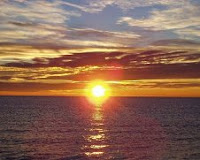
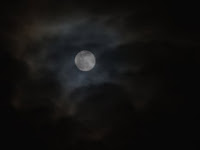
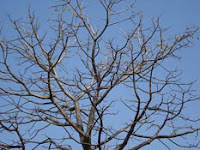







 AMBOLI – SAWANTWADI - MALVAN - VIJAYDURG- 5N / 6D
AMBOLI – SAWANTWADI - MALVAN - VIJAYDURG- 5N / 6D

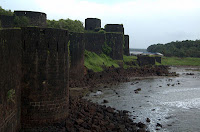 RAJAPUR – RATNAGIRI- 2N / 3D
RAJAPUR – RATNAGIRI- 2N / 3D
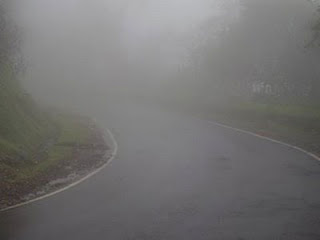 Konkan is the coastal part of Maharashtra State and its scenic beauty rivals with that of Goa which is adjacent to Konkan. Because of neglect by Maharashtra State Government for decades, this great beautiful tourist spot was totally ignored by tourists due to lack of facilities, modern amenities and good hotels. This was the reason why Konkan remained the poorest part of Maharashtra State. Now all that has changed. In last 10 years, after realizing the importance of tourism in Konkan, Maharashtra Government finally realized their neglect and started developing Konkan from tourism point of view. And this right step by Government finally had great results to improve the economy of Konkan area as tourists have now started flocking to Konkan area to spend their valuable vacation time.
Konkan is the coastal part of Maharashtra State and its scenic beauty rivals with that of Goa which is adjacent to Konkan. Because of neglect by Maharashtra State Government for decades, this great beautiful tourist spot was totally ignored by tourists due to lack of facilities, modern amenities and good hotels. This was the reason why Konkan remained the poorest part of Maharashtra State. Now all that has changed. In last 10 years, after realizing the importance of tourism in Konkan, Maharashtra Government finally realized their neglect and started developing Konkan from tourism point of view. And this right step by Government finally had great results to improve the economy of Konkan area as tourists have now started flocking to Konkan area to spend their valuable vacation time.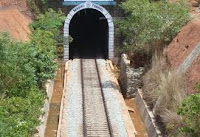 Konkan railway is one of the wonders of modern civil engineering and one has to travel by Konkan Railway to experience its beauty while travelling through innumerable tunnels and scenice mountains. Monsoon (June thru August) is the best time to travel by Konkan Railway although it is bit dangerous beacuse of possible landslides happening during heavy rains.
Konkan railway is one of the wonders of modern civil engineering and one has to travel by Konkan Railway to experience its beauty while travelling through innumerable tunnels and scenice mountains. Monsoon (June thru August) is the best time to travel by Konkan Railway although it is bit dangerous beacuse of possible landslides happening during heavy rains.

